Old Maps of Argentina
Explore our collection full of Old Maps of Argentina.
Located in South America with an area of 1,073,500 square miles, Argentina is the largest Spanish speaking country by area. It is also the eighth largest country in the world. Argentina is bordered by Chile, Bolivia, Paraguay, Brazil, and Uruguay. The name “Argentina” originates from the Latin word “argentum”, meaning silver, as Spanish conquistadors believed that the land had silver.
Politically, Argentina has experienced a history with numerous turmoils and democratic reversals in the 20th century. Currently, the government is made up of a federal republic and a representative democracy. The president is Alberto Fernández. Democracy in Argentina was established in 1983, and was able to endure the 1998-2002 economic depression. As of now, Argentina has one of the sturdiest democracies in Latin America.Argentina is split into twenty three different provinces, and they are as follows: Tucumán, Tierra del Fuego, Santiago del Estero, Santa Fe, Santa Cruz, San Luis, San Juan, Salta, Río Negro, Neuquén, Misiones, Mendoza, La Rioja, La Pampa, Jujuy, Formosa, Entre Ríos, Corrientes, Córdoba, Chubut, Chaco, Catamarca, and Buenos Aires.
When it comes to the economy, it is majorly export based on agriculture. The economy of Argentina is the second largest in South America. Along with this, the economy also ranks very high on the Human Development Index, and is home to a high GDP per capita. However, high inflation has been a strong weakness upon the country for years. In 2017, the inflation rate was 24.8%
Argentina is one of the most biodiverse countries in the world. There is also a great majority of ecosystems that can be found within Argentina, including 15 continental zones, 2 marine zones, and even an Antarctic region. There are over 9,000 plant species found in Argentina, as well as over 1,000 bird species. When it comes to the climate, climate change has had a great effect over Argentina. There has been large amounts of precipitation increase within different parts of the country, and with these increases, there has been higher possibilities of drought, which puts agriculture at risk.
Argentina’s highest point is located in the Mendoza province, and it is the Acongua, which is the highest mountain outside of Asia, standing at 6,960 meters high. It is also the highest point within the southern hemisphere. The lowest point is Laguna del Carbón, located in the Santa Cruz province. This is the lowest point in both the Western and Southern hemispheres, and is also the seventh lowest place on Earth.
The population of Argentina is 40,117,096 inhabitants, ranking 33rd in the world. The average population growth rate annually is 1.03%. Compared to the global average of a population density of 50, Argentina has a small average, with just 15. Currently, Argentina is undergoing a demographic transition towards a slower growing, older population, with 10.8% of the population being 65 and older, which is relatively high. A great majority of the population are immigrants, and Argentina is often referred to as a melting pot country. In fact, over 25 million Argentines have at least one Italian immigrant ancestor.





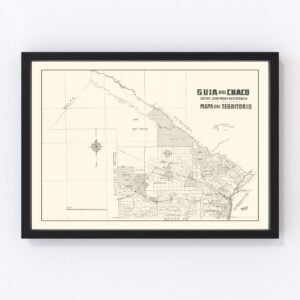



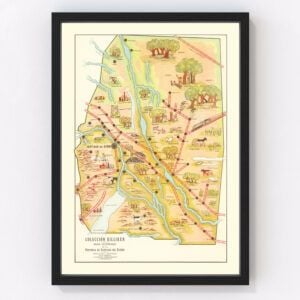

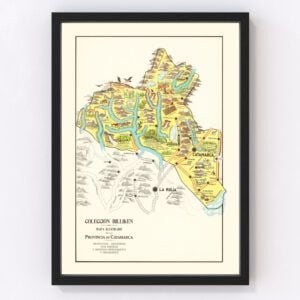
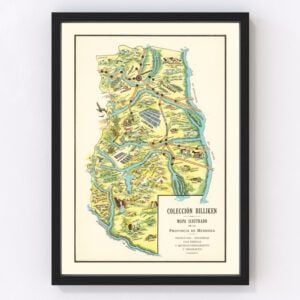





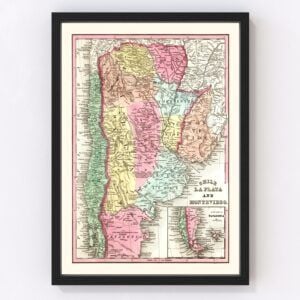
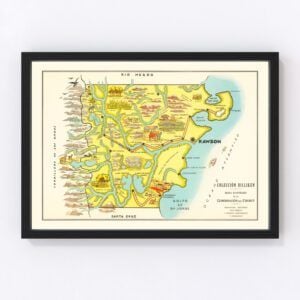




Old Maps of Argentina
Explore our collection full of Old Maps of Argentina.
Located in South America with an area of 1,073,500 square miles, Argentina is the largest Spanish speaking country by area. It is also the eighth largest country in the world. Argentina is bordered by Chile, Bolivia, Paraguay, Brazil, and Uruguay. The name “Argentina” originates from the Latin word “argentum”, meaning silver, as Spanish conquistadors believed that the land had silver.
Politically, Argentina has experienced a history with numerous turmoils and democratic reversals in the 20th century. Currently, the government is made up of a federal republic and a representative democracy. The president is Alberto Fernández. Democracy in Argentina was established in 1983, and was able to endure the 1998-2002 economic depression. As of now, Argentina has one of the sturdiest democracies in Latin America.Argentina is split into twenty three different provinces, and they are as follows: Tucumán, Tierra del Fuego, Santiago del Estero, Santa Fe, Santa Cruz, San Luis, San Juan, Salta, Río Negro, Neuquén, Misiones, Mendoza, La Rioja, La Pampa, Jujuy, Formosa, Entre Ríos, Corrientes, Córdoba, Chubut, Chaco, Catamarca, and Buenos Aires.
When it comes to the economy, it is majorly export based on agriculture. The economy of Argentina is the second largest in South America. Along with this, the economy also ranks very high on the Human Development Index, and is home to a high GDP per capita. However, high inflation has been a strong weakness upon the country for years. In 2017, the inflation rate was 24.8%
Argentina is one of the most biodiverse countries in the world. There is also a great majority of ecosystems that can be found within Argentina, including 15 continental zones, 2 marine zones, and even an Antarctic region. There are over 9,000 plant species found in Argentina, as well as over 1,000 bird species. When it comes to the climate, climate change has had a great effect over Argentina. There has been large amounts of precipitation increase within different parts of the country, and with these increases, there has been higher possibilities of drought, which puts agriculture at risk.
Argentina’s highest point is located in the Mendoza province, and it is the Acongua, which is the highest mountain outside of Asia, standing at 6,960 meters high. It is also the highest point within the southern hemisphere. The lowest point is Laguna del Carbón, located in the Santa Cruz province. This is the lowest point in both the Western and Southern hemispheres, and is also the seventh lowest place on Earth.
The population of Argentina is 40,117,096 inhabitants, ranking 33rd in the world. The average population growth rate annually is 1.03%. Compared to the global average of a population density of 50, Argentina has a small average, with just 15. Currently, Argentina is undergoing a demographic transition towards a slower growing, older population, with 10.8% of the population being 65 and older, which is relatively high. A great majority of the population are immigrants, and Argentina is often referred to as a melting pot country. In fact, over 25 million Argentines have at least one Italian immigrant ancestor.
